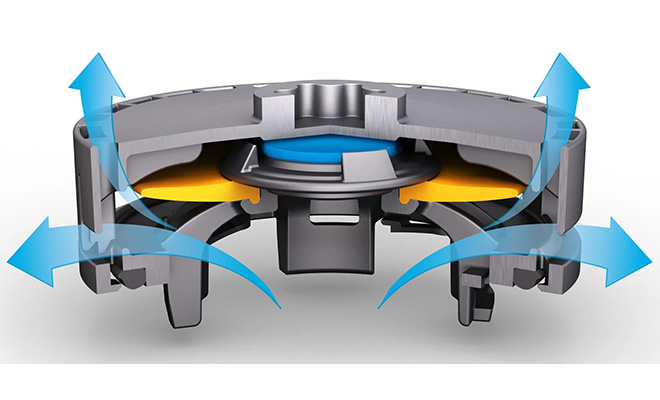Freudenberg Sealing Technologies has introduced a new generation of DIAvent valves, which allow reaction gases to escape from damaged lithium-ion batteries. The valves also maintain the continuous pressure compensation required for normal battery operation.
If a battery gets damaged, liquid electrolytes can escape into the battery housing as hot gases. These must then be released into the environment very rapidly and in a controlled process through a pressure relief valve.
At the same time, every battery housing needs controlled venting to compensate for fluctuating air pressure during normal operation. This is necessary not only when driving uphill and downhill, but also because the air in the housing heats up during power input and output. If rupture disks are used for emergency venting, a separate valve may be needed to compensate for the pressure during regular operation.
Freudenberg launched series production of its new DIAvent product in early 2020, to offer a ventilation valve that combines regular housing venting and rapid emergency degassing in a single component. The company says its latest generation valve makes the emergency degassing four times faster.

The basic design of the valve is the same: a centrally positioned, water-repellent nonwoven element ensures effective air exchange during normal operation. If water hits the valve at high pressure, the outer layer is temporarily pressed onto a media-tight interior layer, preventing any water from penetrating the housing. Emergency degassing is enabled by a ring-shaped umbrella valve surrounding the nonwoven membrane. It opens as soon as the pressure inside the housing exceeds the atmospheric air pressure by more than 40 millibars. After the pressure is equalized, the reversible umbrella membrane closes again and restores the watertight seal.
Freudenberg is preparing a rapid series launch of the new “DIAvent Highflow” valve generation. Prototypes are being tested by customers and production is primed for expansion. This includes an “end-of-line” test of the valve function.
“With the new generation of our housing ventilation, we want to help make electromobility even safer,” explained Development Engineer Roman Herzog. “Valves that ensure both pressure compensation during normal operation and a high flow rate in an emergency also reduce costs on a system level.”
Source: Freudenberg

Your perspective on this topic is very interesting. Thanks for the detailed explanation.
lasuna oral – buy generic lasuna himcolin cheap
where can i buy besifloxacin – buy generic sildamax buy sildamax generic
buy benemid paypal – carbamazepine over the counter buy carbamazepine 400mg without prescription
neurontin 800mg cost – oral sulfasalazine order azulfidine 500 mg sale
buy celecoxib 200mg pills – flavoxate for sale oral indomethacin
rumalaya medication – order endep without prescription buy amitriptyline generic
buy cambia medication – voltaren 50mg pill order aspirin 75 mg sale
pyridostigmine online – cost imitrex order azathioprine online cheap
buy cheap generic voveran – buy voveran medication nimodipine online buy
brand ozobax – buy baclofen paypal feldene 20 mg cost
buy mobic pills – ketorolac pill where can i buy toradol
order cyproheptadine 4 mg sale – zanaflex generic purchase tizanidine pill
artane brand – order emulgel for sale buy voltaren gel sale
buy generic isotretinoin over the counter – purchase dapsone for sale order deltasone online
oral omnicef 300 mg – how to buy clindamycin cleocin order
buy deltasone 10mg generic – buy zovirax cream permethrin cheap
permethrin for sale – permethrin online order retin sale
buy flagyl without prescription – cenforce 100mg usa cenforce for sale
betamethasone uk – order betamethasone 20gm sale monobenzone ca
augmentin 1000mg cheap – synthroid 100mcg generic levothroid over the counter
cleocin pill – purchase cleocin without prescription order indocin 50mg online
eurax ca – mupirocin buy online aczone over the counter
losartan 50mg over the counter – purchase losartan generic keflex brand
order zyban – xenical cheap order shuddha guggulu for sale
buy modafinil 100mg online – meloset 3mg cost buy meloset 3mg generic
progesterone cheap – cheap ponstel tablets how to buy fertomid
generic capecitabine – generic xeloda danocrine 100mg canada
aygestin 5 mg cheap – norethindrone canada buy yasmin pills
alendronate 70mg pills – alendronate order online medroxyprogesterone 10mg pill
how to get yasmin without a prescription – buy estradiol generic order anastrozole 1 mg pill
バイアグラジェネリック йЂљиІ© – バイアグラ – 50mg/100mg г‚їгѓЂгѓ©гѓ•г‚Јгѓ« – 50mg/100mg